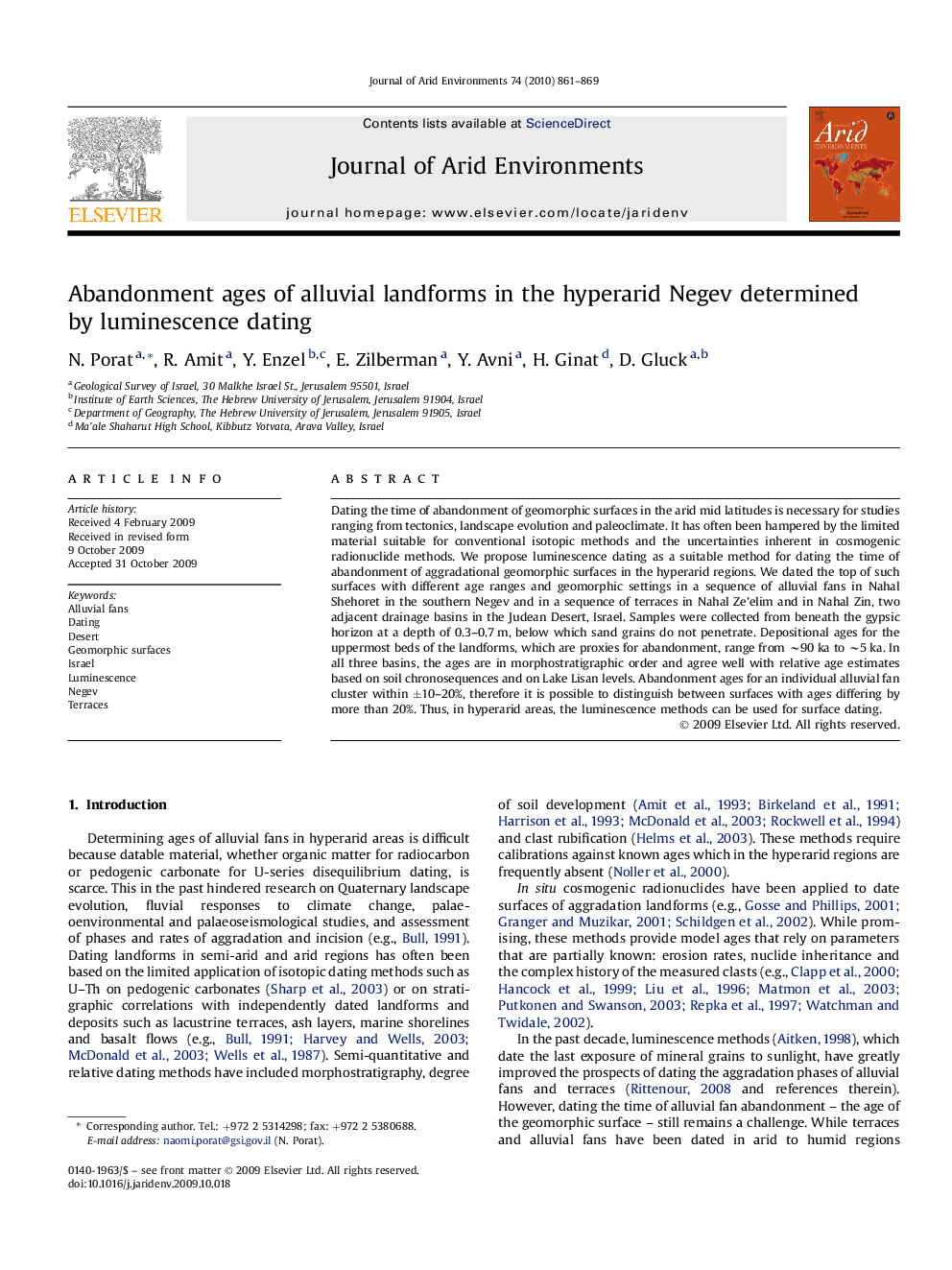| Article ID | Journal | Published Year | Pages | File Type |
|---|---|---|---|---|
| 4393673 | Journal of Arid Environments | 2010 | 9 Pages |
Dating the time of abandonment of geomorphic surfaces in the arid mid latitudes is necessary for studies ranging from tectonics, landscape evolution and paleoclimate. It has often been hampered by the limited material suitable for conventional isotopic methods and the uncertainties inherent in cosmogenic radionuclide methods. We propose luminescence dating as a suitable method for dating the time of abandonment of aggradational geomorphic surfaces in the hyperarid regions. We dated the top of such surfaces with different age ranges and geomorphic settings in a sequence of alluvial fans in Nahal Shehoret in the southern Negev and in a sequence of terraces in Nahal Ze'elim and in Nahal Zin, two adjacent drainage basins in the Judean Desert, Israel. Samples were collected from beneath the gypsic horizon at a depth of 0.3–0.7 m, below which sand grains do not penetrate. Depositional ages for the uppermost beds of the landforms, which are proxies for abandonment, range from ∼90 ka to ∼5 ka. In all three basins, the ages are in morphostratigraphic order and agree well with relative age estimates based on soil chronosequences and on Lake Lisan levels. Abandonment ages for an individual alluvial fan cluster within ±10–20%, therefore it is possible to distinguish between surfaces with ages differing by more than 20%. Thus, in hyperarid areas, the luminescence methods can be used for surface dating.
